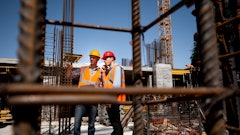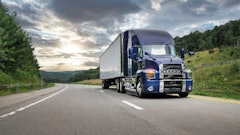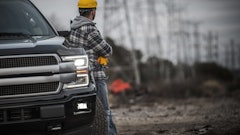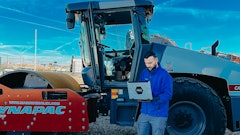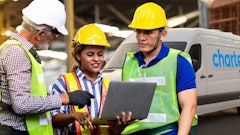
For the State of the Industry Report, the Equipment Today team talked with Christian Coulis, senior vice president of product management with Milwaukee Tool, about 2023 challenges and what the industry may experience in 2024. In this Q&A, Coulis shares his thoughts on the state of the construction industry.
What was the construction industry’s biggest challenge in 2023?
In 2023, the construction industry continued to face setbacks with supply chains. The stress of the global supply chain was evident in everything from materials to supplies to components for equipment and machinery. We continue to hear stories about gas engine manufacturers having significant back orders in new products and parts, increasing downtime on the jobsite or creating severe delays in the project.
Another challenge continues to be labor. Not just recruiting and retaining but upskilling in a way that is most productive and as safe as possible. As the macro economy continues to fluctuate, this challenge has been consistent.
In what technological areas do you see the potential for the most innovation in 2024?
Battery technology continues to push the boundaries of what was previously thought possible, specifically for replacing previous sources of power, like gas, AC, hydraulic and pneumatic. Battery technology is evolving faster than ever before. In 2024, we will continue to see manufacturers of all types expand their lineup of batteries and battery-powered equipment. Charging technology is arguably just as important as battery technology because the battery and charger must work hand-in-hand to keep users efficient on the jobsite.
Milwaukee Tool is fully dedicated to continuing to drive this industry transition. We have dedicated research and development teams to understand and deliver alternative power on the jobsite. For example, our new MX FUEL REDLITHIUM FORGE Battery Packs provide more power to the equipment and have longer runtimes and faster charging capabilities to stay efficient on the job.
What innovations or improvements do you anticipate in construction equipment in 2024?
Making a shift from gas-powered equipment to battery-powered equipment requires integrating the new tools into a crew’s workflow as minimally disruptively as possible. In 2024, more companies will start planning this new workflow to understand where it works [best] for them. For example, instead of setting time aside to fill gas tanks each day, the crew needs to ensure that an efficient charging infrastructure [and schedule] exist, whether [the charging occurs] at the shop overnight, with portable power in a van, on a trailer along the way to the jobsite or charging at the jobsite throughout the day. Additionally, it’s important to consider choosing an equipment platform that has full system compatibility and has continued to grow and innovate.
Which construction sectors face the most hurdles in the move toward electrification? Alternative fuels? Automation?
Access to [electricity] is an added complexity when making the switch from gas-powered equipment to battery-powered. Any type of jobsite or sector that has access to permanent or temporary power will have an advantage over jobs that are in remote locations or those needing to rely on access to power while on the move or in transport. The larger the equipment and the more remote the jobsite, the more challenging it will be. These jobs also need to know how much energy is needed to complete the task at hand or [for the work] day. It’s critical to have the necessary charging infrastructure and the capacity available.
How are the IIoT, software and connectivity affecting your company specifically and the industry as a whole?
The rise in prevalence of the Industrial Internet of Things (IIoT), software and connectivity are impacting all companies. For Milwaukee Tool, it is a driving factor in increasing the intelligence of our products and our operations. For the industry, it is the first practical means to manage many of the coordination problems that have challenged building productivity for decades.
Construction is complex and requires multiple organizations to work toward a common goal not only on the jobs themselves but back into the supply chains. These trends are helping optimize how things are being built by highlighting inefficiency, automating workflows and recommending enhancements that are otherwise challenging to see.
What will be the biggest challenge in 2024 for the industry?
2024 will be a year in which construction companies deeply understand efficiency and productivity. With the workforce challenges from 2023, companies want to get more out of the same person, the same tool or the same application [than ever before] to reduce downtime and trim time out of schedules. For example, gas-powered equipment requires routine maintenance, but battery-powered equipment has no wearable parts such as spark plugs or air filters, eliminating the need to be regularly maintained and managed. This gives users more confidence in their equipment and reduces downtime to get jobs done faster.








